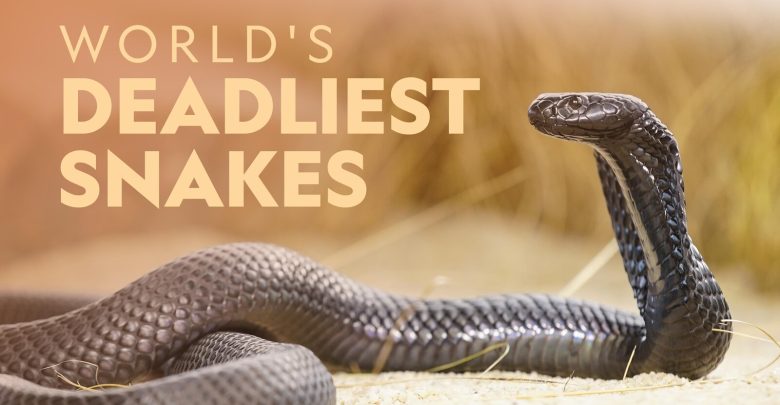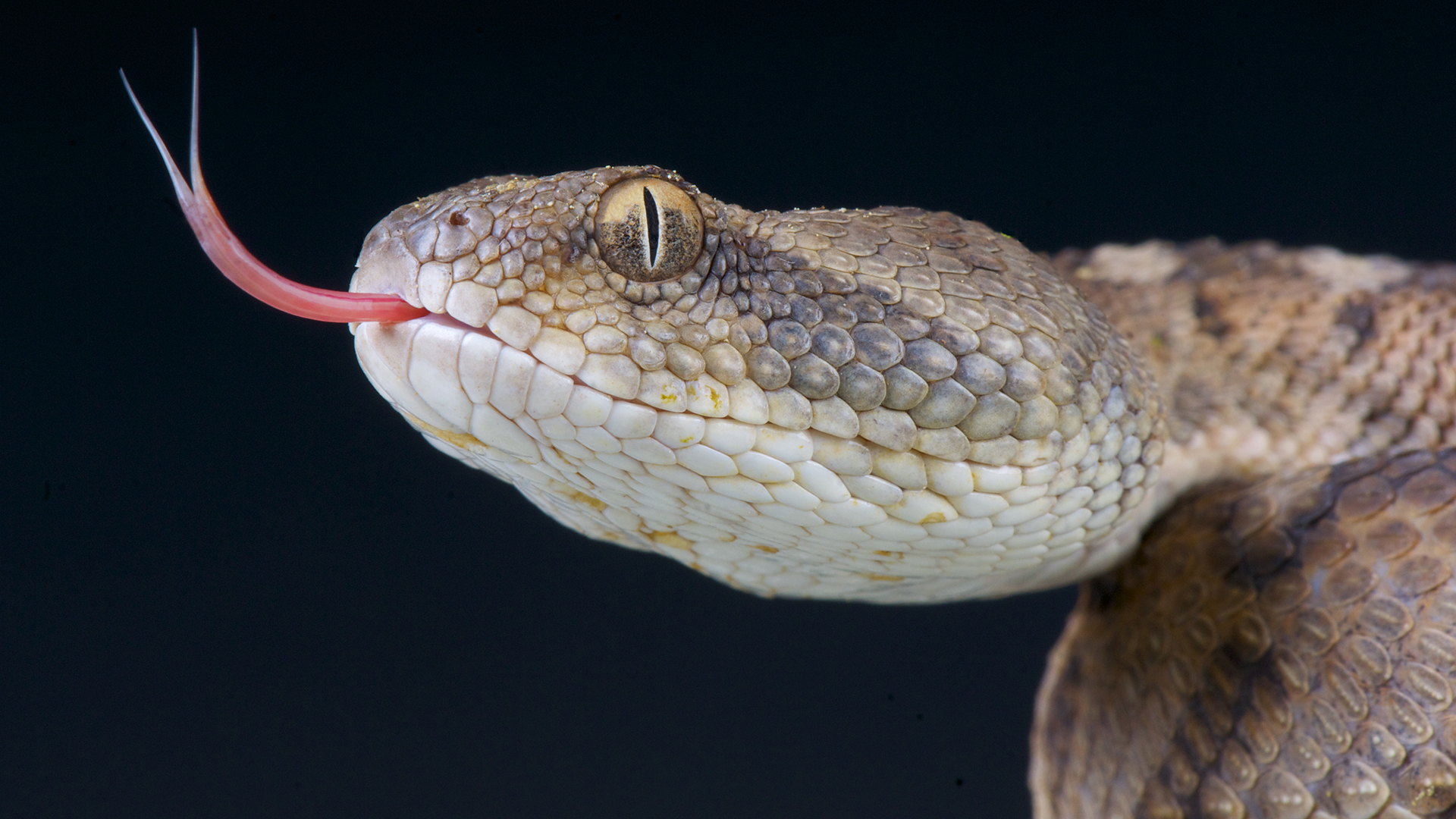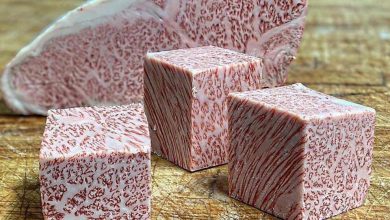Top 10 Deadliest Snakes in the World National Geographic

The inland taipan is the deadliest and most venomous snake in the world, followed by the coastal taipan. These snakes are responsible for more human deaths than any other snake species combined.
The black mamba and the coastal taipan are often considered the most dangerous snakes due to their aggressive behavior and potent venom. We will explore the top 10 deadliest snakes in the world, their characteristics, habitats, and the dangers they pose to humans.
From the sweltering rainforests of the Philippines to the vast wilderness of Africa, these snakes are feared and respected for their lethal capabilities. Join us as we uncover the fascinating world of the deadliest snakes on the planet.
1. Inland Taipan: The Deadliest Snake On Earth
| Title: | Top 10 Deadliest Snakes in the World National Geographic |
|---|---|
| Heading: | 1. Inland Taipan: The Deadliest Snake on Earth |
| Subheading: | Description of the Inland Taipan |
The Inland Taipan is considered the deadliest snake in the world due to its venom. Its venom is so potent that it can kill an adult human in just 45 minutes. The venom of this snake contains a complex mixture of toxins, which primarily affect the nervous system and the blood’s ability to clot. Envenomation leads to multiple symptoms, including severe pain, nausea, vomiting, dizziness, and potentially fatal organ failure. Found mainly in the arid regions of central Australia, the Inland Taipan prefers sparsely populated areas. It dwells in burrows underground and hunts small mammals, birds, and reptiles. While its distribution is limited to Australia, encounters with humans are rare due to its remote habitat. However, it is important to exercise caution when in areas inhabited by the Inland Taipan to ensure your safety.
2. Coastal Taipan: A Deadly Threat
The Coastal Taipan is one of the deadliest snakes in the world. Its venom is highly potent, making it a serious threat to humans and other animals. The venom of the Coastal Taipan contains a mix of neurotoxins and coagulants, which can quickly incapacitate and kill its prey. This snake is known for its unique features and behavior. It has a slender body with scales that range in color from light brown to olive green. The Coastal Taipan is an ambush predator and usually hunts during the day. It is highly aggressive when provoked and will not hesitate to strike. This snake is found along the coastal regions of northern and eastern Australia. It prefers to inhabit dense vegetation such as rainforests and grasslands. It is important to exercise caution when in areas where the Coastal Taipan is known to inhabit.
3. Black Mamba: Africa’s Fastest And Most Lethal Snake
Black Mamba, Africa’s fastest and most lethal snake, ranks among the top 10 deadliest snakes in the world according to National Geographic. Known for its speed and potent venom, the Black Mamba poses a significant threat to humans and other animals.
| Introduction to the Black Mamba |
| The Black Mamba is not only Africa’s fastest snake, but also one of the most lethal in the world. It belongs to the species Dendroaspis polylepis and is known for its deadly venom, aggressive nature, and impressive speed. Found predominantly in sub-Saharan Africa, this snake is highly feared and should be approached with extreme caution. |
| Venom and its deadly effects |
| The venom of the Black Mamba is a potent neurotoxin that affects the nervous system of its victims. It contains various enzymes, which can cause paralysis, respiratory failure, and eventually, death if left untreated. The symptoms of a Black Mamba bite include severe pain, dizziness, difficulty breathing, and rapid heartbeat. |
| Notable characteristics and habitats |
| The Black Mamba is known for its slender body, matte black coloration, and an average length of 8 to 10 feet. It prefers a variety of habitats, including savannas, woodlands, and rocky outcrops. This adaptable snake is active during the day and is known to be highly territorial and defensive when threatened. |
4. Rattlesnake: The Dangerous Rattler
Rattlesnake: The Dangerous Rattler is one of the top 10 deadliest snakes in the world, as featured in National Geographic. Known for its venomous bite, the rattlesnake poses a great threat to humans and is a must-know for any snake enthusiast.
| Rattlesnake: The Dangerous Rattler |
| Overview of the Rattlesnake species |
| The rattlesnake is one of the most dangerous snakes in the world. It belongs to the pit viper family and is known for its venomous capabilities. Rattlesnakes have long, triangular heads and a distinct rattle at the end of their tails, which they use to warn potential threats. They are found in various habitats across North and South America, including deserts, grasslands, and forests. Rattlesnakes are ambush predators and have heat-sensing pits near their eyes, allowing them to detect prey. They primarily feed on rodents, birds, and lizards. When threatened, rattlesnakes can strike at high speed, delivering a venomous bite that can be fatal to humans. It’s important to avoid getting too close to a rattlesnake and to seek immediate medical attention if bitten. |
| Venomous capabilities |
| Rattlesnakes possess venom that they inject into their prey through their hollow fangs. The venom contains a mixture of enzymes and toxins that can cause tissue damage, paralysis, and even death. Different species of rattlesnakes have varying levels of toxicity in their venom, with some being more potent than others. The venom is primarily used for subduing and digesting prey, but when injected into a human, it can have severe effects on the body. Seeking immediate medical attention and anti-venom treatment is crucial in the event of a rattlesnake bite. |
| Common habitats and behavior |
| Rattlesnakes can be found in a wide range of habitats, including deserts, grasslands, woodlands, and even mountains. They prefer areas with sufficient cover, such as rocks, logs, or dense vegetation, where they can hide and ambush their prey. Rattlesnakes are generally solitary creatures, but during the mating season, males will compete with each other to find a female. They are ovoviviparous, meaning the female retains the eggs inside her body until they hatch, giving birth to live young. Rattlesnakes play a vital role in their ecosystems by controlling rodent populations and are an important part of the biodiversity in their respective habitats. |
5. Saw-scaled Viper: The Silent Killer
The Saw-Scaled Viper, known as the silent killer, is considered one of the top 10 deadliest snakes in the world according to National Geographic. Scientists believe it is responsible for more human deaths than any other snake species combined.
|
Saw-Scaled Viper: The Saw-Scaled Viper (Echis carinatus) is considered one of the deadliest snakes in the world. It is responsible for more human deaths than all other snake species combined. Found in various parts of Asia, Africa, and the Middle East, this snake possesses a potent venom that can quickly incapacitate its prey. The venom of the Saw-Scaled Viper contains a combination of toxins, which can cause severe pain, organ damage, and even death. Venom and its potency: The venom of the Saw-Scaled Viper is highly potent and can cause severe harm to humans. It contains a mix of cytotoxic, hemotoxic, and neurotoxic components, making it incredibly dangerous. The venom acts on the victim’s nervous system, causing paralysis and respiratory failure. This viper’s venom is known for its ability to rapidly degrade blood cells, leading to hemorrhage and internal bleeding. Mating rituals and habitats: Saw-Scaled Vipers are known for their unique mating rituals. Male vipers perform an intricate dance, where they intertwine and wrestle with each other to impress the female. These snakes prefer dry and arid habitats, such as deserts, scrublands, and rocky areas. They can also be found in agricultural fields and human settlements. Due to their camouflage and nocturnal nature, they are adept at remaining hidden and striking their prey without warning. |

Credit: www.livescience.com
6. King Cobra: The Majestic And Deadly Snake
|
The King Cobra is one of the most majestic and deadly snakes in the world. Its scientific name is Ophiophagus hannah, which means “snake eater.” The King Cobra is known for its stunning appearance, with its long body and distinctive hood that opens when it feels threatened. It is one of the largest venomous snakes, capable of reaching lengths of up to 18 feet. The venom of the King Cobra is highly potent and contains neurotoxins. When it bites its prey, the venom attacks the nervous system, paralyzing it and eventually causing death. The King Cobra primarily feeds on other snakes, including venomous ones like vipers and cobras. It has a unique ability to raise its upper body and deliver multiple bites, injecting large amounts of venom into its prey. The King Cobra is predominantly found in the forests and jungles of Southeast Asia, including India, Thailand, Malaysia, and Indonesia. It prefers to inhabit areas with dense vegetation, such as rainforests and bamboo thickets. The snake is an excellent swimmer and is often found near bodies of water, such as rivers and lakes. |
7. Fer-de-lance: A Stealthy Assassin
Discover the stealthy assassin of the snake world with the Fer-de-Lance. Ranked among the top 10 deadliest snakes by National Geographic, the Fer-de-Lance is a formidable predator with a deadly bite.
| Overview of the Fer-de-Lance snake |
| The Fer-de-Lance snake, also known as the Bothrops Asper, is one of the deadliest snakes in the world. With its stealthy nature and lethal venom, it has gained a fearsome reputation. Found primarily in Central and South America, this snake is known for its aggressive behavior when startled or cornered. |
| Venemous characteristics |
| The Fer-de-Lance snake possesses highly toxic venom that can cause severe tissue damage, extreme pain, and even death. Its venom contains a potent mixture of neurotoxins and hemotoxic enzymes, which can lead to paralysis and internal bleeding. Quick medical intervention is crucial in cases of snakebite from this species. |
| Regional distribution and habitats |
| The Fer-de-Lance snake is primarily found in tropical rainforests, lowland areas, and grasslands throughout Central and South America, including countries like Costa Rica, Panama, and Venezuela. It prefers habitats with ample prey availability and suitable shelter, such as dense vegetation and forest floors. |
8. Boomslang: The African Tree Dweller
The Boomslang, a deadly African tree dweller, is among the top ten deadliest snakes in the world according to National Geographic. Found in the wilds of Africa, this venomous snake exhibits lethal characteristics that make it a formidable predator in its natural habitat.
Description Of The Boomslang SnakeThe Boomslang snake, scientifically known as Dispholidus typus, is a highly venomous snake primarily found in sub-Saharan Africa. Its name, Boomslang, means “tree snake” in Afrikaans, which accurately describes its arboreal nature. The snake is known for its slender body, large eyes with vertical pupils, and vibrant coloration, ranging from bright green to brown or black depending on its habitat and age. Venom And Its Impact On PreyThe Boomslang’s venom is a potent hemotoxin, affecting the blood clotting ability of its prey. Its venomous bite can lead to severe hemorrhaging, disrupting the prey’s cardiovascular system. The effects are not immediate, with symptoms appearing hours after the bite. This unique adaptation allows the Boomslang to hunt arboreal animals, such as birds and tree-dwelling rodents, by incapacitating them gradually. Adaptations And BehaviorAside from its venom, the Boomslang possesses other adaptations that aid in its survival. Its keeled scales provide excellent grip on tree branches, allowing it to move swiftly and stealthily through the forest canopy. Its slender body shape enhances maneuverability, making it a formidable hunter in its arboreal habitat. |
9. Russell’s Viper: Danger In The Grasslands
Russell’s Viper, one of the top 10 deadliest snakes in the world according to National Geographic, is known for its danger lurking in the grasslands. Found in the Indo-Pacific, this fast-striking viper is both dangerous and deadly.
| Introduction to Russell’s Viper: |
| The Russell’s Viper is one of the deadliest snakes in the world, known for its potent venom and dangerous effects on humans. Found primarily in the grasslands, this snake poses a significant threat to individuals who come into contact with it. |
|
Venom and its effects on humans:
The venom of the Russell’s Viper is highly toxic and can cause a variety of harmful effects on the human body. Its venom contains a combination of enzymes and toxins that can lead to severe pain, organ damage, and even death if left untreated. Immediate medical attention is crucial to increase the chances of survival for snakebite victims. |
|
Natural habitats and behavior:
The Russell’s Viper is typically found in grasslands and agricultural fields, where it hunts for small mammals and reptiles. It is known for its excellent camouflage, which allows it to blend seamlessly with its surroundings. This snake can be aggressive when threatened, so it is essential to exercise caution when encountering one. |
10. Green Mamba: Lesser-known But Deadly
The Green Mamba may be lesser-known, but its deadliness is not to be underestimated. Ranked among the top 10 deadliest snakes in the world according to National Geographic, this snake is a force to be reckoned with.
|
Overview of the Green Mamba species The Green Mamba (Dendroaspis angusticeps) is a lesser-known but highly dangerous snake found in the eastern regions of southern Africa. It is known for its vibrant green coloration, which helps it blend into the lush vegetation of its habitat. |
|
Venomous capabilities The Green Mamba possesses a potent neurotoxic venom that affects the nervous system of its prey. Its venom is derived from a combination of various toxins, including dendrotoxins and fasciculins, which cause muscle paralysis and respiratory failure. |
|
Unique features and geographic range The Green Mamba is known for its exceptionally long and slender body, reaching lengths of up to 2 meters. It has a triangular-shaped head and large, forward-facing eyes, allowing for excellent vision and accurate strikes when hunting. This species is primarily found in the coastal forests and savannahs of South Africa, Mozambique, and Swaziland. It prefers to inhabit tree canopies, where it can easily ambush its prey, which primarily consists of small birds and rodents. |
Conclusion
With their venomous bites and deadly strikes, these top 10 deadliest snakes in the world will send shivers down your spine. From the elusive Inland Taipan to the fierce Black Mamba, each snake on this list is a force to be reckoned with.
National Geographic provides an in-depth and awe-inspiring exploration of these creatures, showcasing their power and beauty. So grab your popcorn and prepare to be amazed as we delve into the world of the deadliest snakes on Earth.




